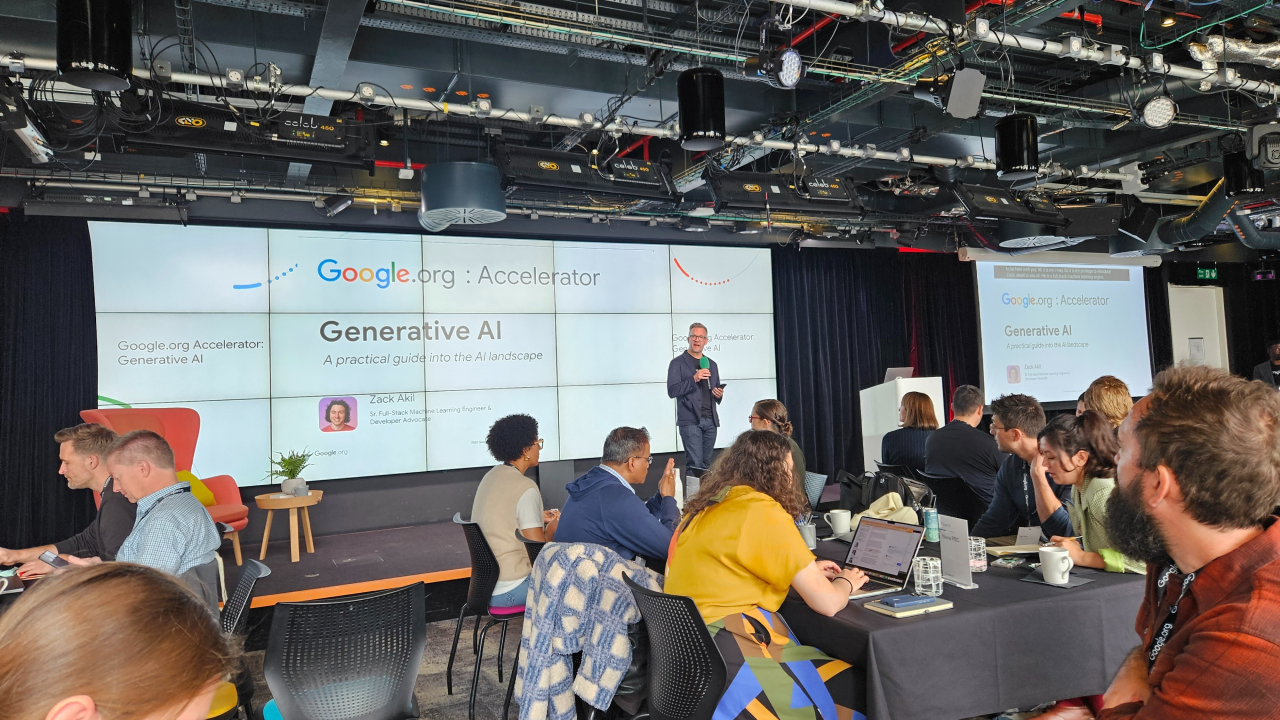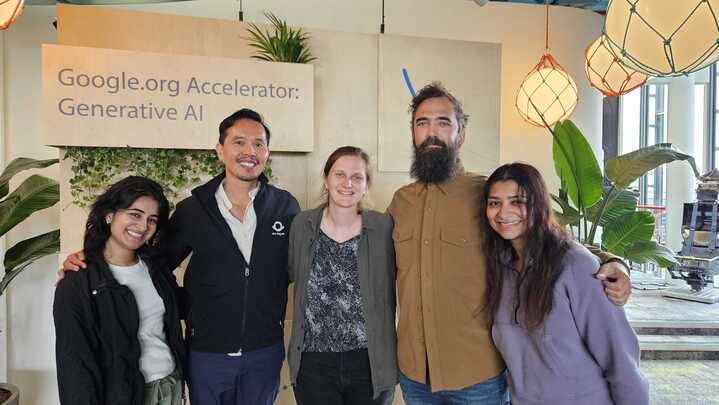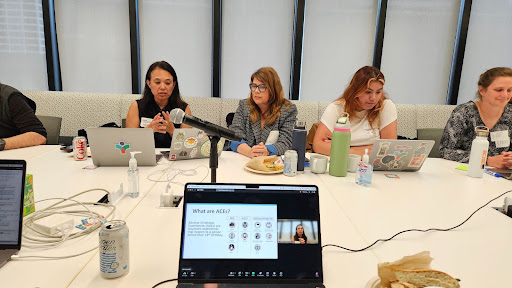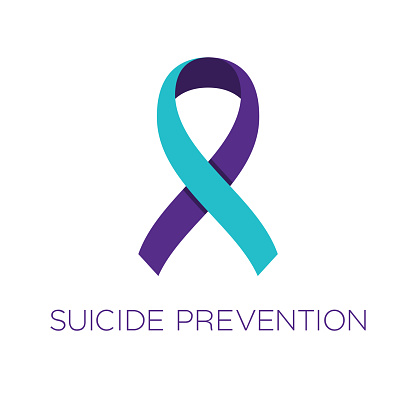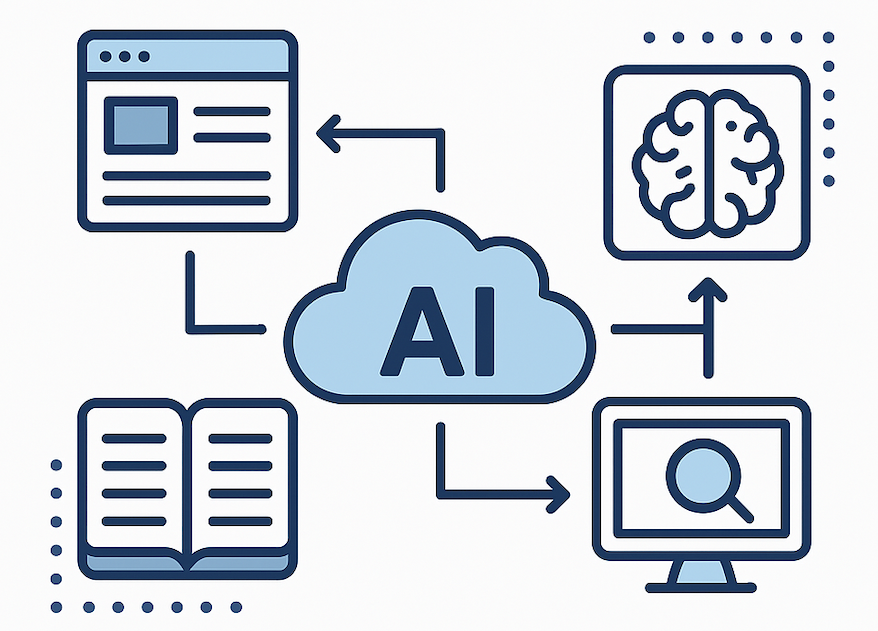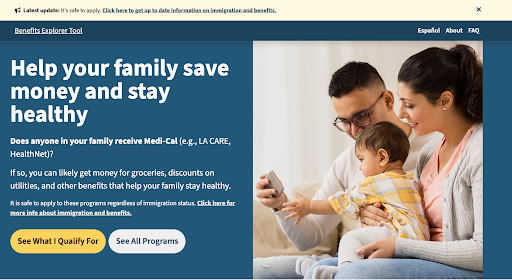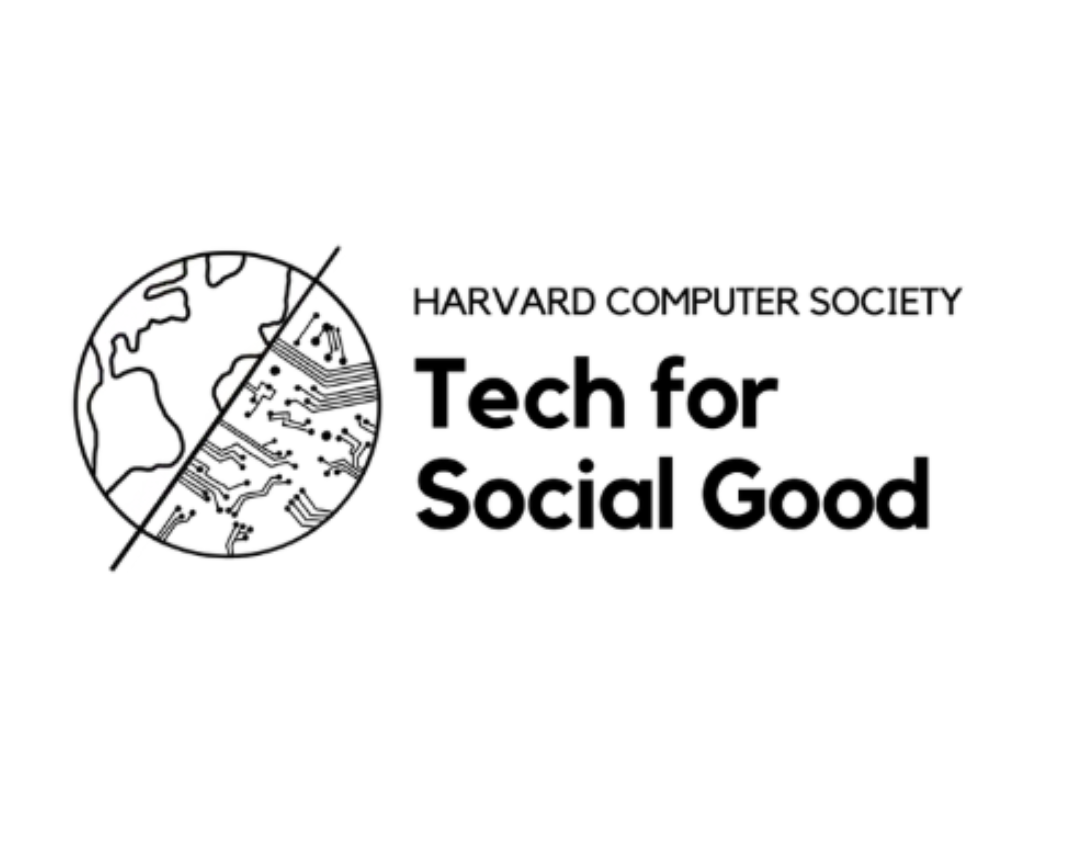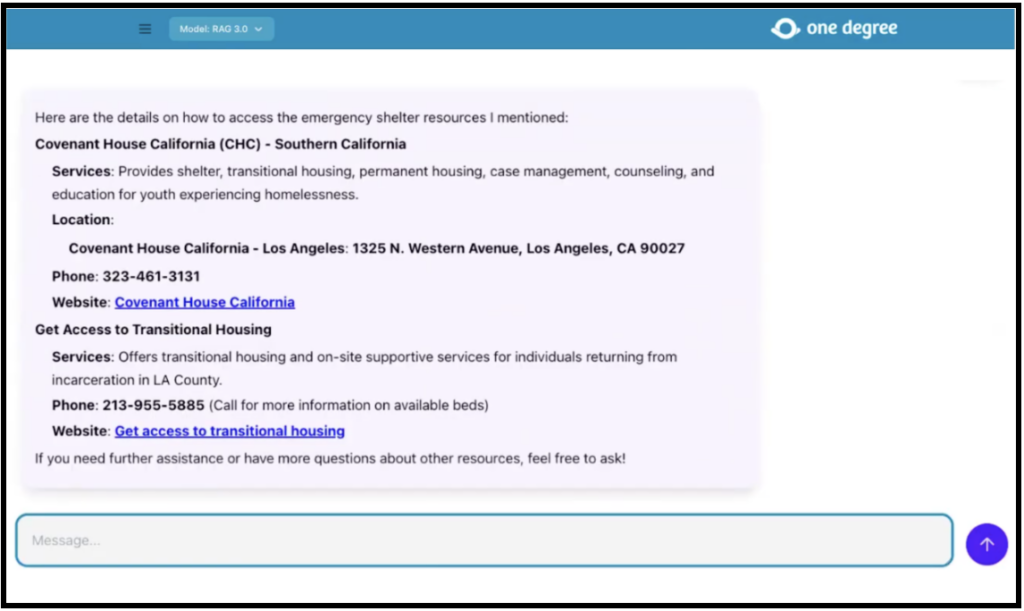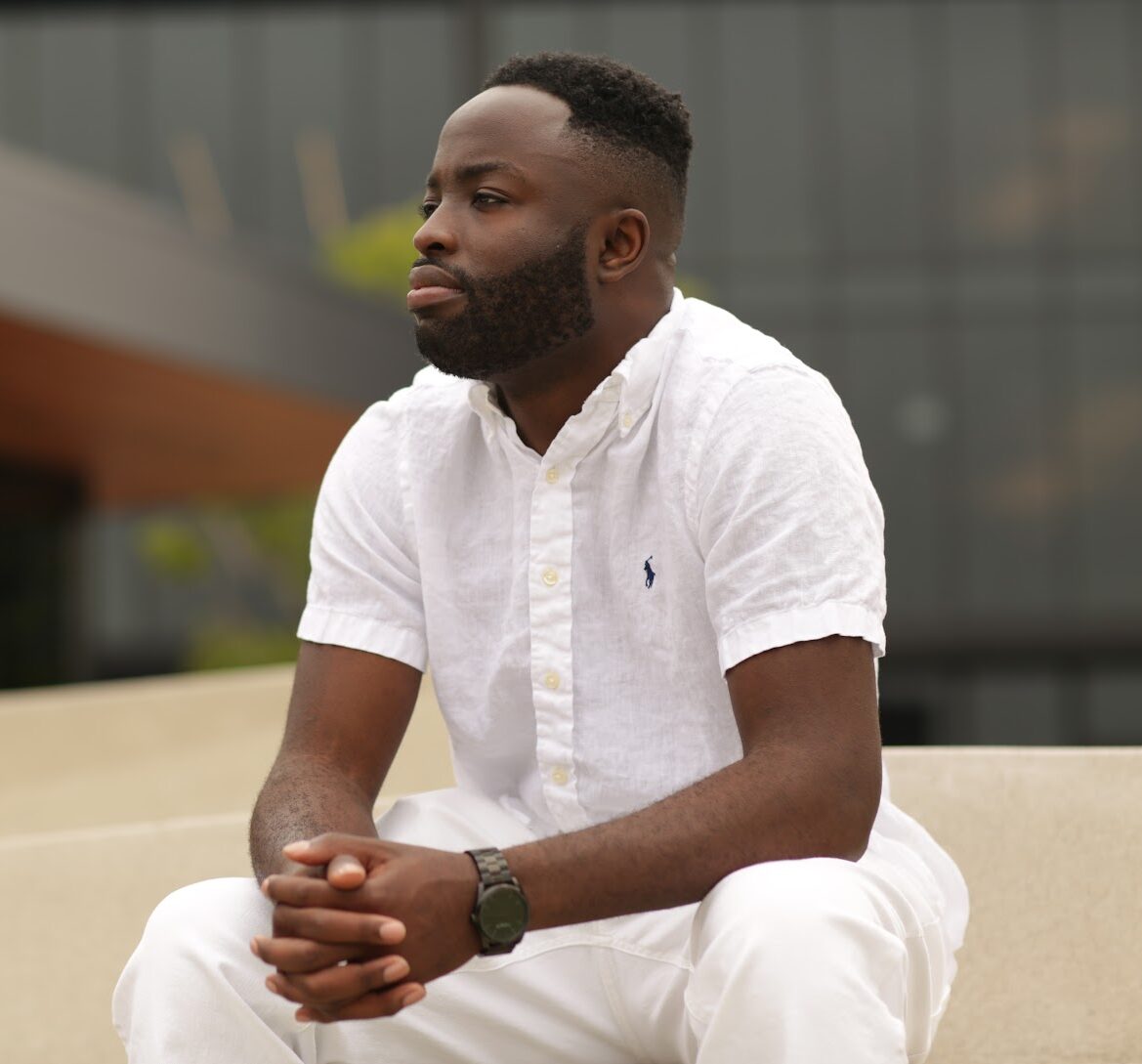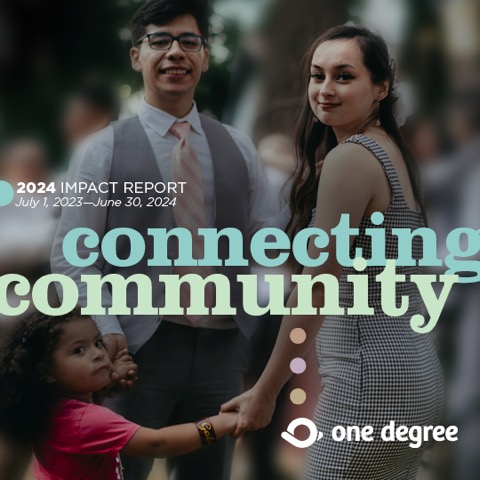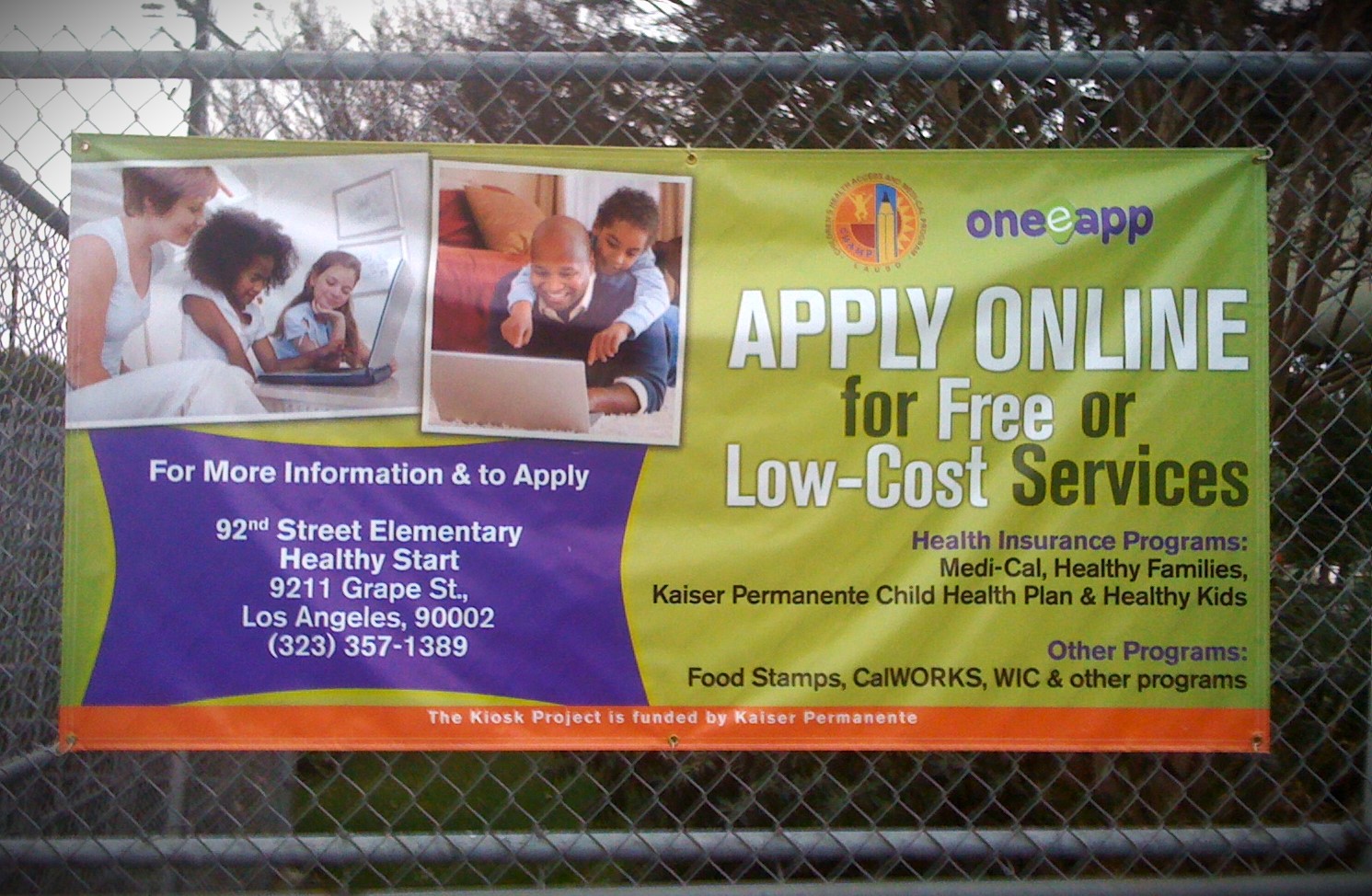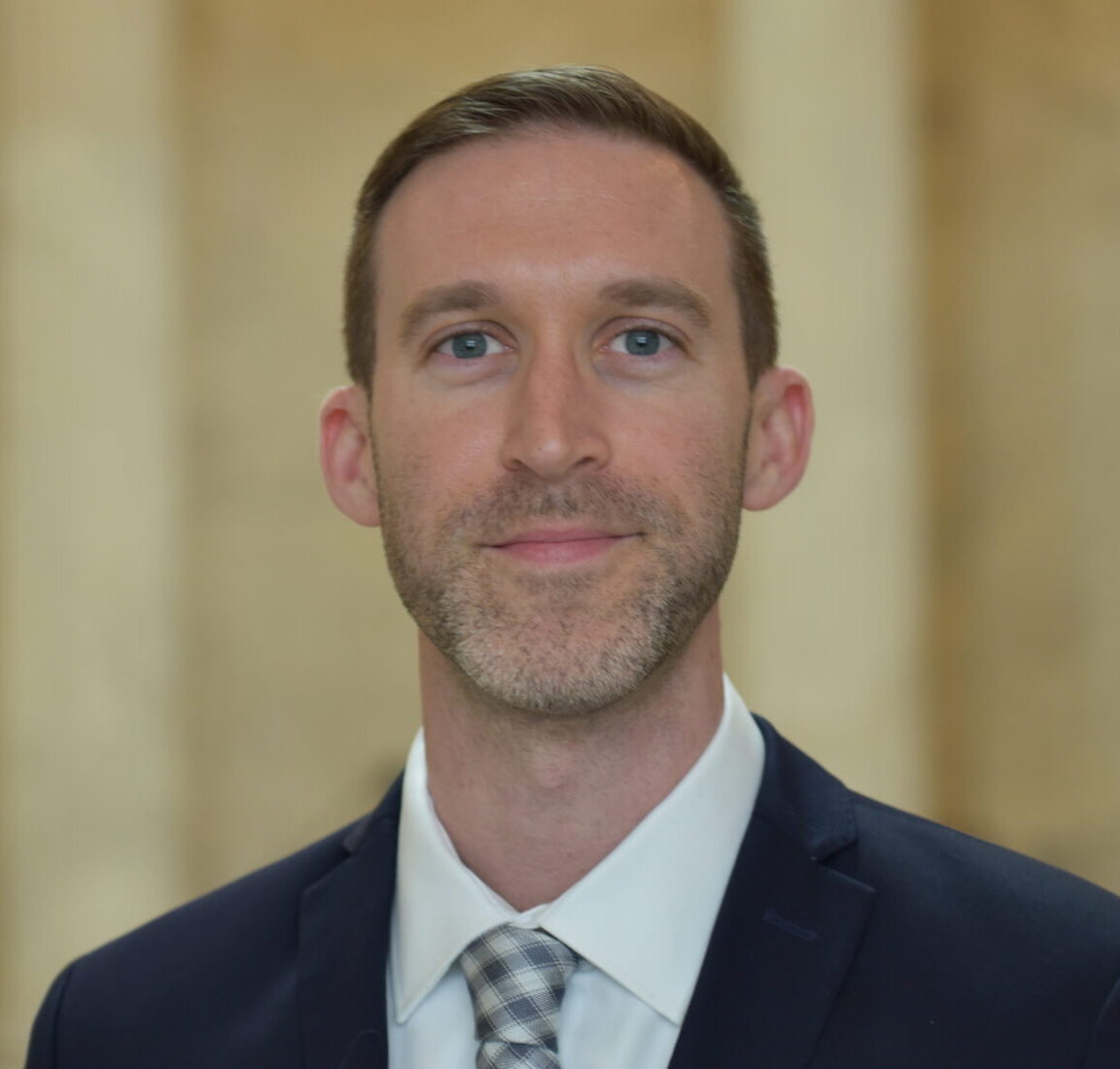Last week, I joined 19 other visionary teams in London for the Google.org Gen AI Accelerator. Immersed in the heart of Google and surrounded by brilliant minds from DeepMind (Google’s AI research lab) and across the Googlesphere, it felt like stepping into the future. The energy was electric, and the pace of learning was like drinking from a firehose.
This experience has fundamentally shifted my perspective on AI and our overall work at One Degree | 1degree.org. Initially, I thought we’d make incremental improvements to our existing chatbot prototype, but now I see a much bigger opportunity. After a week of learning, testing, and dreaming, we realized: we have the chance to do something much more ambitious.
We’re not just building an incrementally better tool; I see the opportunity to position One Degree to be at the forefront of how AI can transform access to social services. Since our founding 13 years ago, One Degree has always been about using the most innovative, cutting edge technology to make an impact in communities, and today, AI represents the next frontier in that mission.
But here’s the reality: AI won’t fix the root causes of bureaucracy and inequity in our social safety net that prevent people from getting the help they need. Those are policy problems, not tech glitches. The systems we’re trying to improve were never designed for ease, dignity, or equity. AI won’t magically make them just.
And yet, I believe AI can help show us what’s possible. If done right, AI can help untangle some of the structural complexities — coordination, interoperability, delivery — that have long been too costly or labor-intensive for governments or private companies. But it must be grounded in community needs, equity, and deep humility.
That’s the path we’re on. The prototype we’re building won’t solve everything. But it will be a leap… a visible, working example of what’s possible when we aim not just to automate, but to transform.
Here are some of the most thought-provoking lessons I’m still processing:

Gen AI = Green Banana.
Zack Akil, a machine learning engineer at DeepMind, described Gen AI as a green banana: it’s not fully ripe, but it will be soon. Models are improving at an astonishing pace. If a model doesn’t work exactly how you want today, it might just need a few more weeks. This calls for patience and iteration.
The product development lifecycle is being reimagined.
One of the most striking shifts is how Gen AI is changing the product development process. Instead of building full end-to-end systems, teams are now slicing development into smaller, more modular experiments: testing prompts, swapping models, integrating APIs, and layering in user feedback, often in parallel. This enables faster iteration and learning cycles. It’s less about writing all the code from scratch, and more about configuring tools, running rapid tests, and stitching together components that already exist. The speed and flexibility are game-changing, but they also require a product discipline with even more emphasis on evaluation and testing.
Agent-based systems are coming
AI agents (autonomous tools that can complete tasks or even communicate with other agents) are on the horizon. These agents could one day help navigate complex systems like healthcare or housing. Imagine an AI that not only helps someone find the right benefit program, but also coordinates between multiple service providers on their behalf. We’re not quite there yet, but it’s a glimpse of what might come. And it’s pushing us to ask: what infrastructure does the social sector need to build now to ensure we’re ready to harness this power?

Responsible AI is still a moving target.
We spent time learning frameworks for building AI responsibly, like weighing harm/benefit tradeoffs, establishing thresholds for acceptable and unacceptable behavior, and examining vulnerabilities (especially for historically excluded groups). And yet, there are still so many unknowns. Even common questions, like how models handle personal identifiable information (PII) or protected health information (PHI), how much hallucination is acceptable, or when to disclose AI involvement, don’t have consistent answers. The ethical terrain is evolving, and we’ll need to build our compass as we go. We’re starting with a strong framework, but we know this journey will require ongoing reflection, transparency, and adaptation.
If a human can do it, AI eventually will…?
One of the most mind-expanding provocations we heard was that any cognitive task a human can do today, a gen AI model will likely be able to do in the future (if not now). This got my wheels turning: What rote, repetitive, manual tasks are we doing, and how might we use AI to help us reclaim that time and energy for deeper impact?
We learned so much about the potential and challenges of generative AI. And our whole team is excited to leverage this technology to create meaningful impact. We came away not just with ideas, but with a prototype in motion, a community of peers, and massive energy. Stay tuned, because this is just the beginning of an incredible journey!
I want to send a HUGE thank you to all the incredible Googlers who made the Google.org Gen AI Accelerator an inspiring launchpad and transformative learning experience for our team at One Degree. We’re coming away energized, with new tools, bold ideas, and a clearer path for how we can use AI to expand access to life-changing services.

THANK YOU to the amazing Google.org team: Rowan Barnett Leslie Yeh Jen Carter Aaron Ogle Gabriel Doss Titobi Williams Dan Peterson Shiri Sivan Daley Gruen Amy Tang Omar M. . Our Google squad leads: Sanjana Sandeep Akshara Majjiga
Incredible speakers and mentors who pushed our thinking: Lyndsay Yerbic Doruk Caner Zack Akil Onajite Emerhor A.Mahdy Abdelaziz Archana Gupta Shifali Mudumba Michael Munn Lucrezia Noli Antonia Gawel Jani Cortesini Adam Connors Christopher Patnoe James Svensson Catherine Wah Umesh Telang Kimoon Kim Tirthankar Bose Ryan Burnell Ilia Udalov Emad Nadim Chak Yan Yeung
And thanks to all the amazing peers from organizations around the world — like Nava (Genevieve Gaudet Martelle Esposito, MS, MPH Foad Green Sundar Venugopalan ), Amrita Mahale, Paritii ( Shmona Simpson Lanre Akintujoye) — and to my One Degree | 1degree.org teammates, Steffi Brock-Wilson and Craig Summerill, who joined us and pushed my thinking every step of the way.

